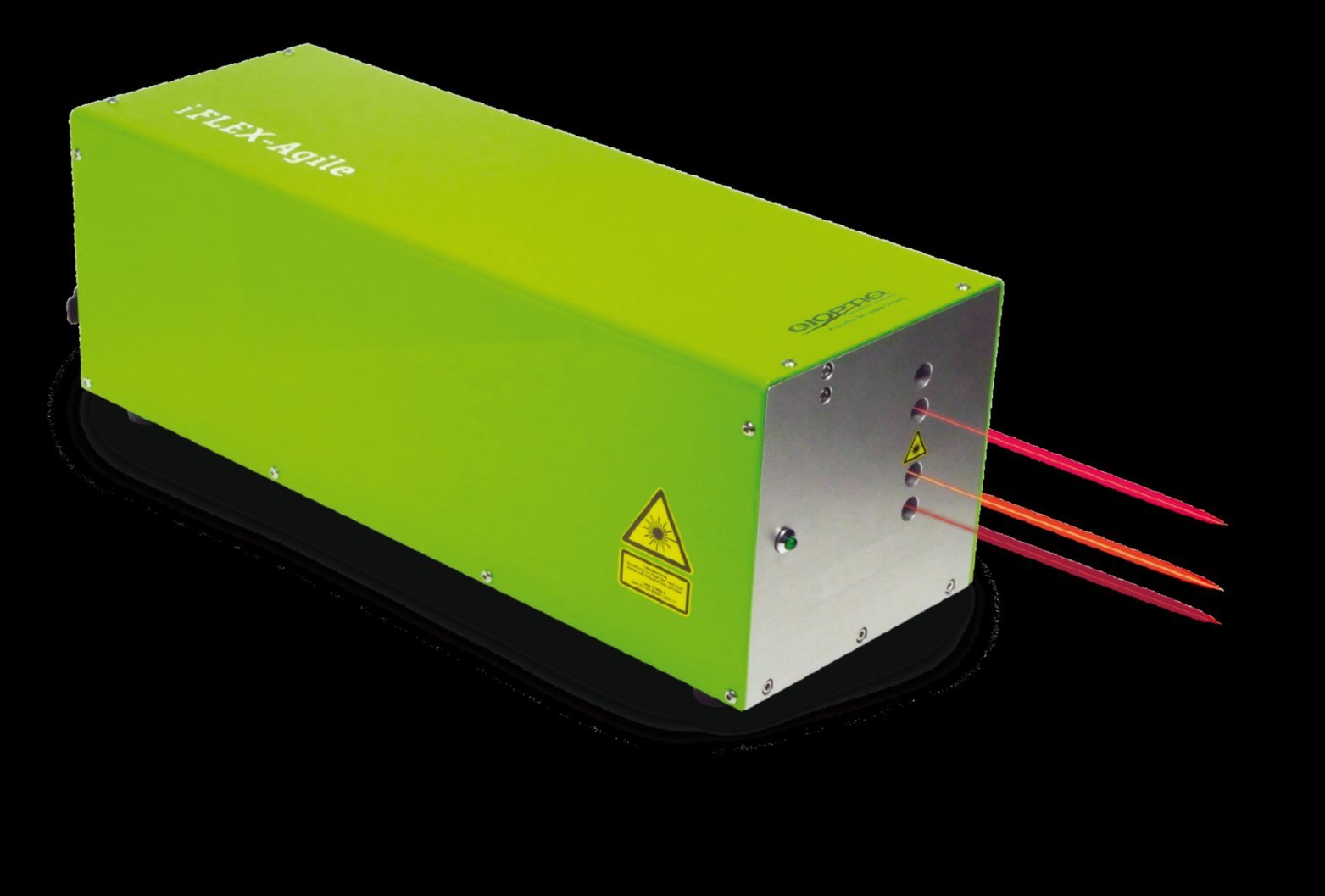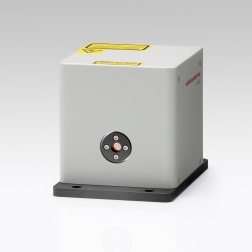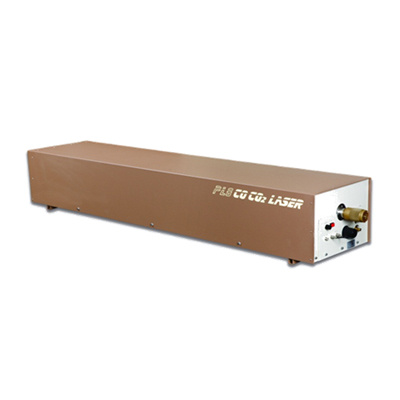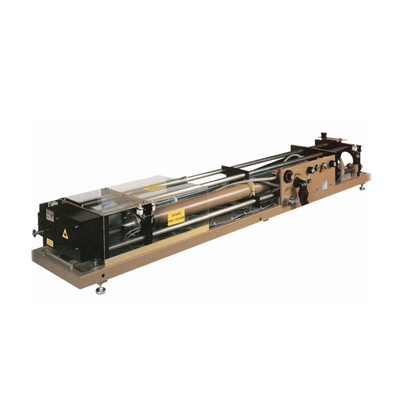方案详情文
智能文字提取功能测试中
J. Phys. Chem. A 2009, 113,2415-24232415 Bahng and Macdonald2416J. Phys. Chem. A, Vol. 113, No. 11, 2009 10.1021/jp809643u CCC: $40.75 O 2009 American Chemical SocietyPublished on Web 02/17/2009 Determination of the Rate Constants for the Radical-Radical Reactions NH2(XB)+NH(X2-) and NH(XB)+H(S) at 293 K Mi-Kyung Bahng’ and R. Glen Macdonald* Chemical Sciences and Engineering Division, Argonne National Laboratory, 9700 South Cass Avenue,Argonne, Illinois 60439-4831 Received: October 31, 2008; Revised Manuscript Received: January 7, 2009 The rate constant for the reactions NH(XB)+NH(X2-)and NH(XB1)+H(’S) were measured over apressure range from 2 to 10 Torr in CF4, or Ar gases at 293 ±2 K.The radicals were produced by the 193nm photolysis of NH dilute in the carrier gas. Both radicals were monitored simultaneously following thephotolysis laser pulse using high-resolution time-resolved absorption spectroscopy. The NH2 radical wasmonitored using the 221 l331 rotational transition of the (0,7,0)A2A(0,0,0) X2B vibronic band near675 nm, and the NH radical was monitored using the R3(4) rotational transition on the 1-0 vibrationaltransition near 3084 nm. The data was analyzed using model simulations of the NH2 and NH temporalconcentration profiles. The rate constants for the NH2 +NH and NH2+H reactions were found to be (9.6±3.2)×10-11 and (7.7±14)×10-15 cmmolecule-s-, respectively, where the uncertainty includes anestimate of both systematic and random errors. The measurements were independent of the nature of thediluents, CF4 or Ar, and total pressure. 1. Introduction Radical-radical reactions are a unique class of chemicalreactions. The interaction of two species with unpaired electronspin always involves multiple potential energy surfaces (PESs)because of the parallel and antiparallel alignment of the electronspin. If one of the interacting radicals also possesses electronicangular momentum, then there are also multiple electronic aswell as spin manifolds. The antiparallel arrangement of electronspin, corresponding to a bonding interaction, usually results inan attractive PES. The bond energy in the newly forming bondis available to the new molecule, and can be redistributedthrough out the chemically activated complex. If there areweaker bonds in the complex, these can undergo fragmentation.Thus, radical-radical reactions generally have the possibilityof multiple product channels from both addition eliminationmechanisms and the presence of multiple PESs.’ Because ofthis complex chemistry, radical-radical reactions are an im-portant class of chemical reactions in combustion chemistry andother environments as they are chain terminating, and/or chainpropagating steps leading to new chemical species and morecomplex chemistry. Reactions involving N;H radicals are an excellent exampleof the complex chemistry occurring in radical-radical interac-tions. These species play an important role in the pyrolysis andcombustion chemistry of NH as well as other combustionenvironments.34 Furthermore, the radicals imidogen, NH(X2-),and amidogen, NH(XBi), are unique because they can reactwith NO(XII) to produce N20 and N2, converting an undesir-able pollutant into mostly benign byproduct. Several flue gastreatments for reduction of NOx from stationary sources takeadvantage of these reactions. The Thermal deNOx process isbased on the direct addition of NH to combustion flue gases. ( * To whom correspondence should be addressed. Fax: (630) 252-9292.E-mail: rgmacdonald@anl.gov. ) ( Cu rrent a d dress: N ational R enewable E n ergy Laboratory, NationalBioenergy Center, 1 617 C ole Blvd., Golden, C O 8 0 401. ) Other flue gas treatments are based on the addition of urea orcyanuric acid generating these radicals and removing NO fromthe gas stream. Although NH and NH2 radicals play animportant role in combustion chemistry, many of the reactionsinvolving these radicals especially with other N;H radicals havenot been extensively investigated. This is especially true atlower temperatures. The radical-radical reaction NH + NHis an interesting case study of one of these NH radical-radicalreactions. In the present work, the rate constants for reactions 2a, k2 and reaction 3, k3= k3a +k3b+k3c were measured over the pressure range from 2 to 10 Torr at293 K. Previously, Davidson et al. studied the shock tubepyrolysis of NH over the temperature range from 2200 to 2800K and monitored the temporal dependence of the concentrationsof NH and NH2 using time-resolved high-resolution absorptionspectroscopy. The rate constants for both reactions 2a and 3awere determined analyzing a complex reaction mechanism. Thereverse of reaction 2a has also been studied in shock tubes byRohrig and Wagner over the temperature range 1100 to 2000K. Fontijin et al. used the high-temperature photolysis techniqueand LIF of NH, and extended the temperature range for themeasurement of k-2a to lower temperatures covering the range833 to 1432 K. The rate constant measurements from bothstudies were in good agreement. Linder et al.’ conducted atheoretical study of reaction 2a in both the forward and reversedirections and obtained reasonable agreement with the experi-mental data. Reaction 3 has not been as widely studied as reaction 2a. The only previous direct measurement of k3 wasby Dransfeld et al. at a pressure of 1.1 Torr and 296 K. In the present work, both NH2 and NH radicals weregenerated from the 193 nm laser photolysis of NH, andmonitored simultaneously following the photolysis laser pulseusing time-resolved high-resolution absorption spectroscopy.The NH radical was detected using the 221331 rotationaltransition" of the (070)A²A1(000)XB1 band near 675 nm,and the ground-state NH(X-) radical on the R3(4) rotationaltransition of the 1 一0 vibrational transition at 3084 nm. Theexperiments reported on here are directly related to a recentstudy of the self-reaction of the NH(XB ) radical from thislaboratory.13 The rate constants for reactions 2a and 3a weredetermined by comparing the experimental temporal concentra-tion profiles of NH and NH2 to those from a detailed chemicalmodel. The mechanism leading to NH formation in the 193 nmphotolysis of NH will also be discussed. 2. Experimental Section The basic experimental apparatus used in this work wassimilar to that described in previous works.13-15 Briefly, thetransverse flow reaction chamber consisted of a rectangularstainless-steel vessel, containing a Teflon box of dimensions100× 100 ×5 cm. The probe laser radiation was multipassedthrough the rectangular photolysis volume using White-celloptics, increasing the optical path length by a factor of 12 to1670 cm. The gases flowed continuously through the reactionvessel, and their partial pressures determined from theirmeasured flow rates and total pressure. The NH was admittedto the reaction chamber from a separate glass vacuum line froma large 20 L storage bulb with a coldfinger kept at -40 ℃.The gases used were supplied by AGA having the followingpurities: Ar, 99.995%; CF4, 99.95%;and NH3, 99.99%. The photolysis laser was a Lambda Physik Compex 205excimer laser operating at a wavelength of 193 nm. Unlike theprevious work on NH self-reaction,13 the attenuation ofthe photolysis laser by absorption of NH was more than 50%.The partial pressure of NH, was varied from 0.01 to 0.035 Torrand was intentionally high in order to generate a detectableconcentration of NH. The visible(Vis) laser was a continuous-wave EnvironmentalOptical Sensors model 2010-ECU external-cavity diode laser,and operated in the red spectral region from 670 to 680 nm.The infrared (IR) laser was a LINOS model 4500 continuouswave OPO laser system. Separate Burleigh Fabry-Perotspectrum analyzers of appropriate finesse and free spectral rangecontinuously monitored the mode quality and the frequencystability of each laser. The frequency of the Vis laser wasmonitored by a a Burleigh WA150 IR wavemeter with anaccuracy of 200 MHz, and the IR laser frequency by a Bristolmodel 621 wavemeter with an accuracy of 20 MHz. Dichroicmirrors, before and after the White cell optics, spatiallyoverlapped and separated the probe lasers radiation, and directedeach to the appropriate detector: a New Focus model 2051 Sidetector, for the Vis radiation and a liquid-nitrogen-cooledCincinnati Electronics InSb detector for the IR radiation. Withthis arrangement, the temporal dependence of the NH2 and NHconcentrations were monitored simultaneously following thephotolysis laser pulse. Data acquisition and control was provided by a NationalInstruments PXI system consisting of multiple A/D, D/A andhigh-speed digitizer modules. The temporal absorption signalswere recorded using the two channels of a National Instrumentsmodel 5122 14-bit transient recorder operating in the DC mode. Wavenumber(cm) Figure 1. Typical wavelength scan over the NH(XZ-)(1-0)R3(4)absorption line. The open circles (O) are the experimental points,and the line is a fit to the spectrum assuming a Gaussian line profile.The line width (fwhm) is 0.0112 cm- close to the expected Dopplerwidth of 0.0103 cm. The line center transition frequency is3242.890 cm.-I This allowed the incident Vis laser intensity to be determineddirectly from the absorption profile using the pretrigger portionof the profile. The initial IR laser intensity was determined froman A/D channel triggered before the excimer laser was fired.The NH absorbance was small, and differential detection of thissignal was used to enhance its signal-to-noise ratio. Oscillationson the NH absorption profile due to thermal lensing andrefractive index changes induced in the optical elements exposedto the excimer laser radiation were removed by tuning the IRprobe laser frequency to a nearby region of zero absorption andrecording a background trace. This background profile wassubtracted from the signal plus background profile during thedata analysis. Figure 1 shows a frequency scan over the NH 'R(4) rotationaltransition of the ground state 1 0 vibrational transition. Asis evident from Figure 1, there were no interfering transitionsin this spectral region. Note, at this partial pressure of NH, thephotolysis laser radiation was totally attenuated, and the scanwas only used to establish the wavelength at line center. Forthe rate constant measurements, the NH absorbance was lessthan 0.5%, and issufficiently small to prevent accuratedetermination of the line center by directly tuning the IR laserfrequency while photolytically generating the NH radical. Thepulse-to-pulse variation in the photolysis laser power andamplitude fluctuations of the probe laser induce too much noiseon the box car signal to unequivocally determine the line centerform the experimentally generated NH signal. Instead, the goodfrequency stability of the IR laser, <3.3 ×10-5cm-min-,and the accuracy of the Bristol wavemeter, ±6.7×10-4cm,were used to preset the IR laser frequency to the line center ofthe transition and maintain this preset frequency. The wavemeteraccuracy corresponds to 6.5% of the full-width at half-maximum(fwhm) Doppler width and falls within the region around line center that is not strongly frequency dependent. A typical scanover the NH2 spectral feature was presented previously. The absorption coefficient at line center for the NH2 221'331 (070)A²A←(000)XB1 transition has recently beenmeasured3 to be (1.19±0.23)×10-17cm²molecule-, undersimilar experimental conditions as this work. The absorptioncoefficient at line center for the NH R(4) rotational transitionof the 1←0 vibrational transition was calculated from themeasurements of the transition moment by Chackerian et al.,and was (3.25±0.33)×10-'7cm’molecule. The uncertaintyin both absorption coefficient measurements include estimatedsystematic and random errors. 3. Results and Discussion (A) Reaction Mechanism. The complete reaction mechanismdescribing the NH,/NH/NH system has been presented in detailin a recent work from this laboratory.Reaction 3 is sufficientlyrapid that only four reactions account for almost all the reactiveflux involving the NH radical. This reaction sequence is givenby (2b) where the * indicates electronically excited states, thet highlyexcited internal states, and X any species in the mechanism.The complete reaction mechanism is summarized18-25 in Table1. The enthalpies of all the species used in the data analysishave been given.13 Unlike the previous study of the NH/NHsystem from this laboratory, diffusion does not contributesignificantly to the loss of NH because the reaction time is short.Nevertheless, the first-order diffusion rate constants wereincluded in the data analysis, and calculated by the procedureoutlined previously2 using the diffusion rate constants previ-ously determined for NH. The reaction sequence producingthe NH radical, indicated by the second photolysis step in theabove reaction sequence, is unknown but will be furtherdiscussed in section C. However, the appearance of NH issufficiently rapid compared to its removal that its productioncan be accounted for by extrapolating the NH concentrationprofile to time zero. Reaction 1a contributes to the productionof NH; however, kia used in the data analysis is not wellestablished. As discussed previously,the value used was takenas the upper bound established by Dransfeld et al. This estimateis in agreement with a theoretical calculation.20 In a recentwork,13 we have shown that at the pressures used in the presentexperiment the rate constant for reaction 1 can be representedby a linear function of carrier gas pressure. The intercept is the TABLE 1: Chemical Model Influencing the NH +NH Reaction at 293 K no. reactants products k (cm’molecule-1s-lyab ref NH2+NH2 NH(X)+NH 3.0×10-15 NNH2+H2 (3.4x 10-13)c N2H2(cis)+H2 N2H2(trans)+H2 NH+NH2+ CF4 N2H4+CF4 8.0×10-29 NH2+NH2+Ar N2H4+Ar 3.9×10-29 NH+H NH+H, 7.7×10-15 this work NH2+H+M NH+M 6.0×10-30 [M]d 18 NH2+NH N2H2+H 9.6×10-11 this work NH+NH N2+2H 3.4×10-12 NH2 +N 4.0×10-13 NH+H H+N 3.2×10-12 H+H+M H2+M 1.0×10-33 [M]d H+NH H+H2+N2 3.0×10-13 H+N2H4 H2+N2H3 1.5×10-13 NH2+N2H4 NH:+N2H 5.3×10-13 10a H+N2H, H+NH2 1.7×10-11 10b NH2+NH, 2.6×10-12 NH+N2H3 N2H2+NH2 3.3×10-11 NH2+N2H N2H2+NH 2.8×10-12 X X(diffusion) sum of the rate constants for the disproportionation channels,k1,0 = kia+2= b khi, and the slope represents the third-bodydependent recombination reaction rate constant, kre,o. These rateconstants and associated uncertainties were measured to be k1o=(3.4±6)×10-13 cm’ molecule-s-, and ke6=(8.0±0.5)× 10-29, and kieo = (3.9±0.4)×10-29cmmolecule-2s-1. Reaction 2b is not well established but has been measured18to be 6.0 ×10-30 cm molecule-2s- for NH as third body.The signal-to-noise of the NH profiles was sufficient to obtainan experimental determination of k2a. The products of reaction 3 have not been identified experi-mentally or investigated theoretically, but have been discussedby Dean and Bozzelli. These workers estimated the activationenergy for reaction 3a using the Evans Polanyi relationship tobe 10.2 kJ mol. This large activation barrier would precludereaction 3a from being important at 293 K, and it was notconsidered in the data analysis. These workers also suggestreaction 3b would likely be the dominant product channel. Onthe basis of isoelectonic sequences, Miller et al." also suggestedthat reaction 3b was the dominant product channel. In the dataanalysis, reaction 3b was taken to be the only product channel.As will be shown in the next section, k3 was found to be pressureindependent, and channel 3c is unlikely to be the dominantreaction channel. In any case, the initial concentration of theNH radical is so small and ks rapid enough that the products ofreaction 3 cannot influence the kinetics of the NH radical. (B) Determination of k2a and k3. As described in a recentwork, rate constants were determined by minimizing the sumof the squares of the residuals,x, between the observed NHtemporal concentration profile to one generated from a computersimulation using the rate constants summarized in Table 1. Anintegrated reaction contribution factor, IRCF+z, analysis28 wasalso included in the data reduction to determine the extent aparticular reaction, Y + Z, contributed to the production orremoval of a particular species, X, in the reaction mechanism.The IRCFyx+ zs were expressed as a fraction of the totalconcentration of species X produced or removed in the system,and represent the fraction of the total flux of species X thatproceeded through reaction Y +Z during a given time interval. Figures 2 and 3 show typical NH and NH temporalconcentration profiles obtained under low and high initial NHconcentration conditions, respectively. In each case, the corre-sponding NH2 and NH concentration profiles were obtained onthe same photolysis laser pulse. In both figures, the experimentaldata points, the solid circles (), are shown for the first 50 usfor every data point, and the open circles (O) are shown everyfifth data point. The solid lines are the model generatedconcentration profiles NH2 and NH resulting in the variation ofk and k2a and k, respectively. As is evident from the Figures,the initial NH concentration was much smaller than the initialNH2 concentration. Although the NH2 concentration is in largeexcess over the NH concentration, the NH concentration profiledecay cannot be described by a single exponential curve so thatpseudofirst order conditions are not appropriate for this system.Both reactions 1a and 2a contribute significant NH product fluxand must be accounted for in the data analysis. As can be seen from Figures 2b and 3b, the NH(X2-) radicalwas not formed directly by photolysis of NH, but was producedwith a pressure dependent rate over several tens of microsec-onds. The shape of the temporal concentration profile ofNH(X2-) suggests that it was formed from the quenching ofa precursor created in the 193 nm photolysis of NH. Theinduction period for NH formation was accounted for byextrapolating the concentration profiles of NH to time zero and Figure 2. Typical temporal concentration profiles for (a) NH and (b)NH. Both concentration profiles were recorded simultaneously followingthe 193 nm photolysis pulse. The conditions of the experiment werePNH=0.013 and PcF = 4.663 Torr at a nominal ArF laser fluence of25 mJ cm-and 294 K. (a) NH2 experimental data points are shownby the open circles (O) every fifth point. The solid line is the model fitto the NH2 profile to determine kie to be 7.1×10-29 cmmolecule-s-l, and the dashed lines are variation in the NH2 concentration profilefor a±25%variation in kle. (b) Experimental data points for NH shownby the closed circles (●) every data point for the first 50 us and everyfifth data point by the open circles (O). The solid line is the modelsimulation of the NH profile with k2a=1.0× 10-14 cm’ molecule-s-and k3 =(1.05±0.25)×10-10 cm’molecule-s-l, where theuncertainty is ±2o in the goodness of fit. proceeding with the model simulations using this initial NHconcentration. However, the comparison between model simula-tions and experimental profiles was delayed for 100 us. Theinitial concentration of NH was determined by fitting the NHprofiles to a series of three exponential terms of the form: (Aea+ Be-)- Ce-k. The two terms with positive pre-exponentialfactors described the decay of the NH profile and the term withthe negative pre-exponential factor described the rise in the NHconcentration profile. The concentration of NH at time zero wasapproximated by the sum,A +B. Simply extrapolating the NHconcentration profiles back to time zero would also have beensufficiently accurate, but the production term, ke, was used inan unrelated calculation to provide some insight into themechanism of NH radical production. This calculation will bediscussed in the following section. The above analysis assumesthat the NH ro-vibrational states have equilibrated to thetemperature of the bath gas over the time scale of the productionof NH. With CF4 as a bath gas, vibrational equilibrium wasestablished in a few microseconds for both NH2 and NHfollowing the photolysis pulse and with a small addition of CF4(less than 0.4 Torr) to an Ar bath gas to less than 10 us.Vibrational relaxation of NH by CF4 is also likely rapid. To create a detectable concentration of NH, it was necessaryto use much larger concentrations of NH than used in theprevious experiments conducted in this laboratory.13 Thus, theaxial distribution of the radicals had a much larger gradient thanin previous work, and it is possible this could influencel4 themeasurement of k3. However, the measurements of k in thepresent work were found to be within 10% of the previously t (sec) Figure 3. Similar to Figure 2 except Ar is the major carrier gas, givingan increase in the initial concentration of NH. The conditions of theexperiment were PNH=0.016, PcF= 0.296, and PAr = 4.600 Torr ata nominal ArF laser fluence of 26 mJ cm- and 293 K. (a) Same asFigure 2a except kie++ke=3.0×10-29 cm molecules-. (b)Same as Figure 2b except k3= (1.10±0.10)×10-10cm’molecule-s-1. reported measurements from this laboratory,13 so such effectswere small. The determination of ks was not sensitive to theexact value of kre,o used in the data analysis. In Figures 2a and3a, the solid lines show the concentration profiles for NH2predicted by the model simulations using the optimum fit valuesfor kre,o, and the dashed lines show the NH2 concentrationprofiles predicted for a variation of ±25% in the values of kYe.o.If these larger or smaller values for kYe,o were used in the reactionmechanism to determine the new values for k3, the NH profileswould be indistinguishable from the solid lines in Figures 2band 3b, and the change in optimum value of ks would be about±2%. As noted above, reactions la and 2a were sources for theproduction of NH, and contributed to the observed kinetics forNH. The production flux of NH from these two sources was ofthe order of 20% of the total removal flux of NH so that eventhough kia and k2a were small (Table 1), the NH and H atomconcentrations were hundreds of times larger than the NH radicalconcentration, making these two reactions important. Theirimpact on the production of NH is clearly seen as the slowapproach of the NH concentration profile to the baselines inFigures 2b and 3b. Neither kia nor k2a have been measuredexperimentally at 293 K, but an experimental upper limit of kiaequal to 3.0×10-15 cm’molecules-has been established.This value was kept constant in the data analysis and k2a varied.The procedure adopted to optimize k3 and k2a was similar tothat described previously.26 The initial value of k2a was set tozero, and the optimum value of ks determined. The value of k2awas incremented by 5×10-15 and the new optimized value ofk3 determined for this value of k2a. These steps were repeateduntil a minimum inX(k2a, k3) was identified. In Figure 2a, thesolid curve is the model generated concentration profile for theseoptimum values of k2a and ks equal to 1.0 x 10-4 and (1.05±0.2)×10-10cm’molecule-s,-respectively. The uncertaintyin ks is the 95% confidence limit in the goodness-of-fit. The dashed curves are the NH profiles calculated using theseconfidence limits for k3. The variation of k3 with a change ofk2a from 0 to 2.0x 10-14 cm’ molecule-1 s- would result inchange in k of about ± 10%, and be well within the limitsshown in the figure. For this experiment, the IRCF+H wasthree times larger than the IRCFH+NH,, as expected from theratio of the two rate constants and the approximately equal NHand H atom concentrations. Figure 3b is similar to Figure 2bexcept for a higher initial NH concentration, and hence, has ahigher signal-to-noise ratio. The parameter set that producedthe best fit to the data was k2a equal to 1.0×10-14 and ks equalto (1.06±0.08)×10-10 cm’molecule-s-. The dashed curvesare again the model generated NH concentration profiles forthe limits of ks at the ±2o range of uncertainty. The experimental conditions and results are summarized inTable 2 for the experiments in CF4 as bath gas and in Table 3for mixtures of Ar with a small amount of added CFa to facilitatevibrational relaxation, as discussed below. With kia set at 3.0× 10-15 cm’ molecule-1 s-l, k2a wasdetermined to be(7.7±14)×10-15 cm’molecule-s-l, wherethe uncertainty is ±2o in the scatter of the data. The measure-ments of k2a equal to 5.0x10-14 cm’ molecule-s- wereignored in determining the value of k2a. The value of ks wasfound to be (9.6±2.0)×10-11cm’molecule-s-, where theuncertainty is ±2o in the scatter of the data. Figure 4a showsthat within the scatter of the data k3 was independent of theinitial NH concentration and the nature of the carrier gas,whether it was in CF4, () or dilute CFa/Ar mixtures (口).Thephotolytic yield of NH was slightly higher in dilute CFa/Armixtures, and as can be seen from Figure 4a, the experimentsinvolving the highest initial NH concentration were conductedusing dilute CF/Ar mixtures. The CF4 was added to facilitatethe rapid vibrational relaxation of NH. The vibrational relax-ation rate constantof NH(0,V2,0) by CF4 as collision partneris very large, 3.2x10-11 cm’molecules. Also, work fromthis laboratory showed the addition of a few tenths of a Torrof CF4 to Ar dramatically reduced the equilibration time forboth NH2 and NH from hundreds of microseconds to a fewmicroseconds. The independence of the measurements of k3 onthe initial NH concentration indicated that the NHro-vibrationalstates had also rapidly equilibrated to the carrier gas temperatureeither in collisions with CF4 or because of the pressures of theexperiments. Figure 4b shows that the measurements of k3 wereindependent of the total pressure and composition of the carriergas, within the scatter of the data. Although the pressure rangeis not large, Figure 4b suggests that reaction 3 is dominated bythe disproportionation channel because k was independent ofthe nature of both the carrier gas and pressure. Under similarconditions, reaction 1 is dominated by the recombinationchannel. (C) Production and Yield of NH(X2-) in the 193 nmPhotolysis of NH. The exact mechanism of the generation ofNH from the 193 nm photolysis of NH, is complex, and is notcompletely understood.30.31 For the present work, it is clear fromFigures 2b and 3b that no NH(X2-) was observed immediatelyafter the photolysis pulse. The production rate of NH(X2-)linearly increased with total pressure, and yielded a rate constantof (5.9±1.1)×10-13 cm’molecule-s-in CFa and (8.5 ±1.4) × 10-13 cm’molecule-s- in dilute CF4/Ar mixtures. Theinitial yield of NH from the 193 nm photolysis of NH, definedas the initial concentration of NH(X’2-)divided by the initialconcentration of NH2, was (0.0016±0.00017) in CF4 and(0.0032±0.0005) in dilute CF/Ar mixtures. .TABLE 2: Summary of the Experimental Conditions and Measurements of k2a and ks in CF4 at 293 K a k2a incremented in steps of 5.0x10-15 cm’molecules-.Uncertainty is ±2o in the goodness of fit to the NH concentration profiles Kaes and Stuhl3 have discussed the formation of NH(XZ-)in the 193 nm photolysis of NH in dilute NH/Ar mixturesand ArF fluences similar or higher to those used in this work.They noted that the temporal appearance of the NH(X2-)profile suggested that it was formed from the collisionalquenching of some precursor formed in the photolysis of NH3.These workers found no consistent model to describe thetemporal behavior of NH. At Ar pressures of 2 Torr, theappearance rate constant was similar to that observed inthe present work, but unlike the present work it decreased withincreasing Ar pressure. They also observed that some fractionof NH(X>-) was formed directly following the photolysis laserpulse. This latter process has been identified by Kenner et al.as a sequential two photon process in which a second 193 nm photon was absorbed by highly excited internal states ofNH(XB ), creating NH(A’II). Subsequent fast radiative decay(radiative lifetime of 0.42 us) and near gas kinetic quenchingof NH(A’II) produced NH(X2-). In the present experiment,this pathway may have been suppressed because the additionof a small amount of CFa has been shownl3 to rapidly removehighly excited states ofNH(XB). The simplest possible precursor to NH(X-) formation isthe initial formation of a metastable excited electronic state ofNH.Metastable states of NH have been observed following the193 nm photolysis of NH in one(NH(a'A)) or two photon4(NH(b 2+)) processes. However, there is not a great deal ofinformation available about the collisional quenching35,36 ofNH(a'A) or NH(b+). Generally, NH(b2+) is quenched at .TABLE 3: Summary of the Experimental Conditions and Measurements of k2a and ks in Ar at 293 K partial pressure (Torr)[NH]o(x10-10) [NHz]o(×10-13) k2a(×104) k3(×10-11) PAr PcF PNH: (molecules cm3) (molecules cm (cmmolecle-s-1) (cm’molecles) 2.08 0.134 0.00726 9.05 1.83 1.0“ 10.6(±3.3) 2.87 0.184 0.0100 11.4 2.97 10.7(±0.42) 3.26 0.10 0.0114 13.1 3.13 9.6(±2.9) 3.95 0.254 0.0138 13.8 3.31 12.0(±1.7) 4.60 0.296 0.0161 13.4 4.09 10.9(土1.7) 4.60 0.296 0.0161 13.8 4.10 10.6(±0.84) 5.31 0.341 0.0185 14.6 4.25 10.5(±2.1) 6.30 0.404 0.0220 15.9 4.95 9.9(±1.3) 6.578 0.422 0.0230 17.4 4.84 10.2(±2.5) 6.578 0.422 0.0230 15.2 4.84 10.5(±2.1) 7.56 0.487 0.0265 16.1 5.43 9.1(±0.84) 7.58 0.487 0.0265 16.6 5.42 9.4(±1.7) 8.00 0.514 0.0279 16.5 5.55 10.7(±3.3) 9.18 0.590 0.0321 16.4 5.47 10.0(±2.5) Figure 4. (a) Rate constant measurements for k as a function of theinitial NH concentration. The measurements with CF4 as carrier gasare shown by the solid circles (O) and with dilute CF4/Ar by the opensquares (口). The dashed line is the average value of the k3, and thevertical line is the ±2o level of uncertainty in the scatter of the data.(b) Same as (a) except ks is shown as a function of total pressure. Themeasurements of ks in CF4 are indicated by the solid circles (●) and indilute CFA/Ar mixtures by the open squares (口). slower rates than NH(aA) by the same collision partners. Piperet al.’7 measured the quenching rate constant of NH(a'A) byAr to be 1.2×10-14cm’molecules,and Rohrer and Stuhl38placed an upper limit on this rate constant of 1.0 × 10-15 cm’molecule-s-. There is no data available for the quenching ofNH(aA) by CF4. Further complications come from the rapidreaction between NH(aA) and NH. The rate constant for thereaction, NH(a'A)+NH3-2NH2 has been measured to be1.5×10-10 cm’ molecule- s- at 293 K, and the productchannel identified. In spite of the inconsistency in the literatureAr quenching rate constant of NH(a'A) and the measured rateof appearance of NH(X’2-) in the current experiment, it isuseful to model the system to estimate the initial yield of theprecursor of NH(X2-) in the photolysis of NH. The different initial yields of NH(X2-) in CFa and Ar suggests a competitionbetween NH(X’Z-) formation and another pathway in thecollisional quenching of the precursor. The alternate pathwaywas taken as the rapid reaction of the precursor with NH,similar to the situation if the precursor was NH(aA). Thus, theyield of NH(X’-) in each experimental record was correctedfor the loss of the precursor by a rapid reaction with NH. Thisanalysis gives the initial yield of NH(a'A) to be (0.0081 ±0.0025) in CF4 and (0.0096±0.0027) in dilute CFA/Ar mixtures.The average of these measurements gives the initial yield ofNH(a^) to be (0.0088±0.0026). The agreement within thescatter of the measurements suggests that the model may havesome validity. This estimate is in agreement with an upper limitto the yield of NH(aA) measured to be 0.008 by Kenner etal., and at least indicates that the process leading to NH(X32-)formation does not have a large yield. Vibrationally excitedNH(X2-) was detected by Kaes and Stuhl,30 and couldinfluencethe interpretation of theappearance rate ofNH(XZ-)(v=0) observed in the present experiments. How-ever, the determination of k3 was independent of both pressureand initial NH concentration, indicating vibrational relaxationwas fast with CF4 in the gas mixture. As noted, the model just described above assumes theprecursor to NH(X2-) was NH(aA), but it is likely some otherspecies. However, the model does explain the variation of theyield of NH(X2-) with collision partner. The precursor mustbe formed rapidly; it must react rapidly with NH so that thereis a competition between production of NH(X2-) and anotherprocess; it must be efficiently quenched in collisions with Arand CF4. It is also possible that there are other sources orprocesses responsible for the production of NH(X’2-) ratherthan the quenching of electronically excited states of NH. Inany case, the yield of the NH(X2-) precursor was small, andthe production rate constant of NH(X2-) sufficiently large thatthe exact mechanism of NH production did not influence theobserved kinetics and determination of the rate constants. (D) Estimated Uncertainty in k3. The two main systematicsources of error in the measurement of k3 are the uncertainty inthe rate constants used to model the chemistry of the systemand the uncertainty in determining the concentrations of the NHand NH radicals. It has already been discussed in section II Bthat the determination of k3 was very weakly dependent on thevalue used for k1, a variation of ±25% in ki resulted in a changeof k3 of a few percent so that uncertainties in the rate constantsin Table 1 had a small effect on the determination of k. However, k2a and ks were both treated as variables in the dataanalysis; the value of k2a also affects the value of k3. For thecomplete data set, a variation of k2a ranging form 0 to 2.0 x10-14 cm’molecules- resulted in a variation in k3 of ±10%.This variation in k2a is slightly larger than the scatter in thedetermination of k2a at the 2o confidence limit, but represents agood estimate of the influence the uncertainty in k2a has on thedetermination of k3. Combining the uncertainty in the scatterof k3 (±21%) with the influence of k2a (±10%) results in thetotal uncertainty in ks from these sources of ±23%. As noted above, the NH concentration profile is dominatedby reaction 3, and hence, the determination of ks with anuncertainty including systematic and random errors of ±23%.However, the uncertainty in the scatter of k2a, ±180%, dominatesthe total uncertainty in k2a and can be taken as the totaluncertainty including systematic and random error. The uncertainty in the NH2 absorption coefficient includingsystematic and random errors has been discussed3 and was±19% at the 2o level of confidence. The uncertainty in the NHabsorption coefficient was estimated to be ±10% at the 2oconfidence limit including systematic and random errors. Thisestimate was based on the scatter of the experimental measure-ments16 of the transition dipole moment and its close agreementwith a high-level theoretical calculation. The combineduncertainty from the determination of the radicals concentrationswas ±22% at the 2o level of confidence. All other sources of uncertainty are much smaller than thosejust discussed; thus, the total uncertainty in the determinationof k3 arising from the reaction model and absorption coefficientdetermination was ±23% and ±22%, respectively. Thesesources of uncertainty are uncorrelated and can be combinedto give a total uncertainty in k3 of ±32%, including systematicand random error at the 2o level of confidence. Similarly, theestimated uncertainty in k2a was ±180%. (E) Comparison the Previous Work. There are no previouslow temperature measurements of k2a. Davidson et al. providean Arrhenius expression for k2a derived from their hightemperature measurements. Extrapolating this expression to 293K gives an estimate of k2a equal to 1.2×10-13 cm’molecule-s-. This value is fifteen times larger than the value measuredin the present work. Of course, the extrapolation from 2200 to300 K is long and cannot be expected to provide an accurateprediction of the rate constant near room temperature. Thetheoretical calculations of Linder et al. provide a better estimateof k2a. These workers used high-level ab initio electronicstructure theory to characterize the NH2+H PES and canonicalvariational transition state theory to calculate rate constants inboth the forward and reverse directions. The calculated rateconstants also included corrections for tunneling and anharmo-nicity effects. These workers calculated both forward and reverserate constants that were in reasonable agreement with theexperimental data. These calculations covered the tempera-ture range 500 to 3000 K. An extrapolation of the temperaturedependence to 293 K gives k2a equal to 4.1 x 10-14 cm’molecules-. This is within a factor of 5 of the measurementsof the present work and should be considered reasonableagreement, considering the large uncertainty associated with theexperimental measurements reported here. As noted in the introduction, there is only one previousmeasurement of k3 at 296 K by Dransfeld et al.10 These workersused a discharge flow system of NH/F2/He mixtures to generateNH2 and NH from the reactions F+NH3 and F + NH invarying mixtures of excess NH over the initial F atomconcentration. Thus, the measurementswere made under pseudo-first-order conditions with the NH2 concentration inexcess. Laser magnetic resonance spectroscopy was used todetermine the absolute concentration of the NH and NH2 radicalsand follow the temporal decay of the NH radical concentration.The rate constant for reaction 3 was measured to be (1.3 ±0.5) × 10-10 cm’molecule-s,- where the uncertainty is ±2o in the scatter of the measurements.These measurements andthe measurements of the present work are within their associateduncertainties and in good agreement with each other. As noted in the introduction, reaction 3 is typical of thecomplexity of radical-radical reactions. The reagents correlateto quartet and doublet spin manifolds leading to different productchannels in each manifold. In the doublet manifold, the reactionoccurs under the influence of the deep N2H potential well. TheN2H complex has a lower energetic asymptote than thereactants, and can dissociate to NH + H products. Thus,reactions 3b and 3c represent the classic competition betweenadduct formation, stabilization, and fragmentation to products.This behavior is typical for radical-radical reactions especiallyinvolving nitrogen-containing species as recently highlightedin detail by Fernández-Ramos et a1.40 for the NH +NOreaction 4. Conclusion The 193 nm photolysis of NH was used to generate boththe NH2 and NH radical. The temporal concentration profilesof both species were monitored simultaneously using time-resolved high-resolution absorption spectroscopy. The produc-tion of the NH(X'2-) radical was interpreted as the quenchingof a precursor created in the 193 nm photolysis of NH3, perhapsNH(a'A), by the carrier gas in competition with rapid removalby NH. This model predicted that the yield of the precursor tobe 0.0088 ± 0.0026. Separately, the yield of NH(X’2-) at ArFlaser fluences of about 30 mJ cm- was measured to be 0.0016and 0.0032 in CF4 and dilute CF4/Ar mixtures, respectively.The system was analyzed used a detailed chemical model,summarized in Table 1 for the NH chemistry. The rate constantfor reaction 2a was found to be (7.7± 14)× 10-15 cm’molecule-1s-, and for reaction 3 was measured to be (9.6±3.2) ×10-11 cm’molecule-s-, both measurements at 293 K.The uncertainties in the rate constant measurements include anestimate of systematic and random errors at the 2o confidencelevel. The present estimates for k2a are a factor of 5 smallerthan an estimate based on a detailed theoretical calculation.The measurements of ks are in good agreement with the onlyprevious measurement of this rate constant.10 Acknowledgment. This work was performed under theauspices of the Office of Basic Energy Sciences, Division ofChemical Sciences, Geosciences, and Biosciences, U.S. Depart-ment of Energy, under Contract DE-AC02-06CH11357. References and Notes (1) Pilling, M. J.; Stocker, D. W. Annu. Prog. Chem., Sect. C 1999,.95,277. (2) Holbrok, K. A.; Pilling, M. J.; Robertson, S. H. UnimolecularReactions, 2nd ed.; John Wiley & Sons: Chichester, U.K., 1996. (3) Miller, J. A.; Bowman, C. T. Prog. Energy Combust. 1989, 15,287. (4) Dean, A. M.; Bozzelli, J. W. In Gas-Phase Combustion Chemistry;Gardiner, W. C., Jr., Ed.; Springer-Verlag: New York, 1996. (5) Huges, K. J.; Tomlin, A. S.; Hampartsoumian, E.; Nimmo, W.;Zsely, I. G.; Ujvári, M.; Turanyi, T.; Claugue, A. R.; Pilling, M.J. Combust.Flame 2001, 124, 573. (6) Davidson, D. F.; Kohse-Hoinghaus, K.; Chang, A. Y.; Hanson,R. K.Int. J. Chem. Kinet.1990,22,513. (7) Rohrig, M.; Wagner, H. G. Twenty-Fifth Symposium (International)on Combustion; The Combustion Institute: Pittsburg, PA, 1994, p 975. (8) Fontijin, A.; Shamsuddin, S. M.; Grammond, D.; Marshall, P.;Anderson, W. R. Combust. Flame 2006, 145, 543. (9) Linder, D. P.; Duan,X.; Page,M. J. Chem. Phys. 1996,104,6298.(10) Dransfeld, P.; Hack, H.; Kurzke, H.; Temps, F.; Wagner, H. G. Twentieth Symposium (International) on Combustion; The CombustionInstitute: Pittsburg, PA, 1984,p 655. (11) Ross, S. C.; Biss, F. W.; Vervloet, M.; Ramsay, D. A. J. Mol.Spectrosc. 1988, 129,436. ( (1 2 ) Bernath, P . F.; Amano, T . J. Mol. Spectrosc . 1982,95,359. ) (13) Bahng, M.-K.; Macdonald, R. G. J. Phys. Chem. A 2008, 112,13432-13443. (14) He, G.; Tokue, I.; Harding, L. B.; Macdonald, R. G. J. Phys. Chem.A 1998,102,7653. ( (15) B ahng, M.-K.;Macdonald, R. G. J. Phys. Chem. A 2 0 07,11 1 ,3850. ) ( (16) C hackerian, C., Jr.; G u elachvili, G.; L op e z-Pinerio, A. ; Tip p ing,R. H. J. Chem. P hys. 1 989, 90, 6 41. ) (17) Cantarella, E.; Culot, F.; Lievin,J. Phys. Scr. 1992, 46,489. ( (18) G ordon, S.;Mulac, W.; Nangia, P. J. Phys. Chem. 1971,75,2087. ) (19) Nicholas, J. E.; Spiers, A. I.; Martin,N. A. Plasma Chem. PlasmaProc. 1986, 6,39. (20) Xu, Z.-F.; Fang, D.-C.; Fu, X.-Y. Chem. Phys. Lett. 1997, 275,386. (21) Adam, L.; Hack, W.; Zhu, H.; Qu, Z.-W.; Schinke, R. J. Chem.Phys. 2005, 122,11430. (22) Baulch, D. L.; Cobos, C. J.; Cox, R. A.; Esser, C.; Frank, P.; Just,Th.; Kerr, J. A.; Pilling, M. J.; Troe, J.;Walker, R. W.; Warnatz, J. J.Phys. Chem. Ref. Data 1992, 21, 411. ( (23) V aghjiani, G. L . Int.J. Chem. K inet. 1995, 27,777. ) (24) Gehring, V.M.; Hoyermann, K.;Wagner, H.Gg.; Wolfrum, J. Ber.Bunsen. Phys. Chem. 1971, 75, 1287. (25) Konnov, A. A.; Ruyck, J. D. Combust. Flame 2001,124,106. ( (26) Gao, Y .; M acdonald, R. G. J . Phys. Chem. A 2005,109,5 3 88. ) (27) Miller, J.A.; Smooke,M. D.; Green, R. M.; Kee, R. J. Combust.Sci. Technol. 1983, 34, 149. (28) Warnatz, J.; Maas, U.; Dibble, R. W. Combustion: Physical andChemical Fundamentals, Modeling and Simulation, Experiments, PollutantFormation, 2nd ed.; Springer: Berlin, 1995. ( (29) Yamasaki, K.; Watanabe, A.; Tanaka, A.; Sato, M . ; Tokue, I. J . Phys. Chem. 2 002, 1 06,6563. ) ( (30) K aes,A . ; S t uhl, F. J . Chem. Phys. 1992, 9 7 , 7 3 62. ) ( (31) Hake, A.; Stuhl, F. J .Chem. Phys. 2002, 117 , 2513. ) ( ( 3 2) Kenner, R . D.; Browarzik, R. K.; Stuhl , F. Chem . Phys . 1988, 1 21,457. ) (33) Kenner,R.D.; Rohrer, F.; Stuhl, F. J. Chem. Phys. 1987,86,2036. (34) Donnelly, V. M.; Baronavski, A. P.;McDonald, J. R. Chem. Phys.1979,43,271. (35) Zetzsch, C.; Stuhl, F. Ber. Bunsen. Phys. Chem. 1976,80,1354.(36) Bower, R. D.; Jacoby, M. T.; Blauer, J. A. J. Chem. Phys.1987,86,1954. ( (37) P iper, L . G .; K rech, R. H.; Taylor, R . L. J. C hem. Phys. 19 8 0,73, 791. ) ( (38) R ohrer, F.; S tuhl, F. Chem. Phys. L e tt. 1984, 111, 2 3 4. ) ( (39) Adam, L.; Hack, W.; Olzmann, M. Z. Phys. C h em. 2004,218,439. ) (40) Fernandez-Ramos, A.; Miller, J. A.; Klippenstein, S. J.; Truhlar,D. G. Chem. Rev. 2006, 106,4518. ( JP809643U )
关闭-
1/9
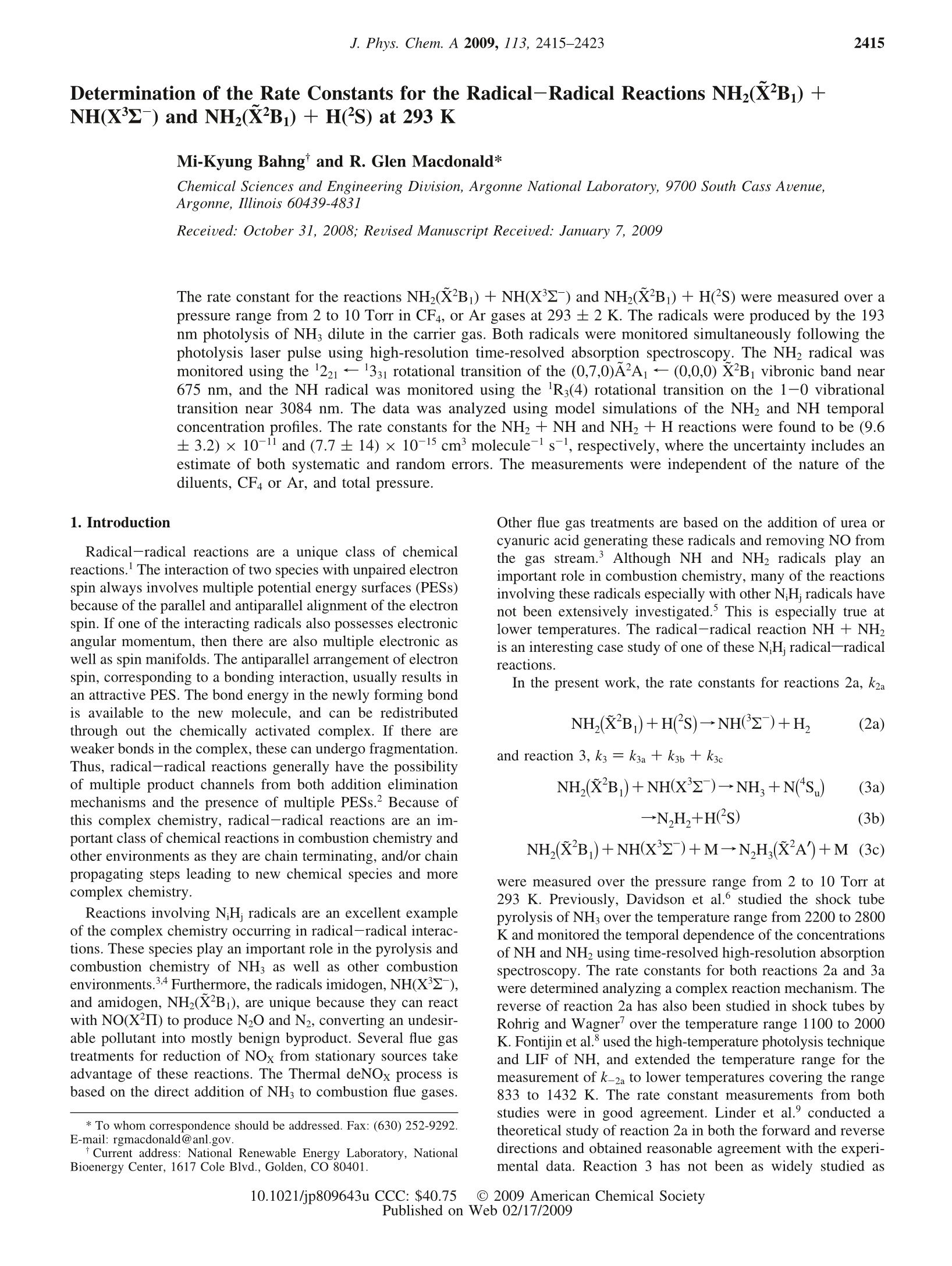
-
2/9
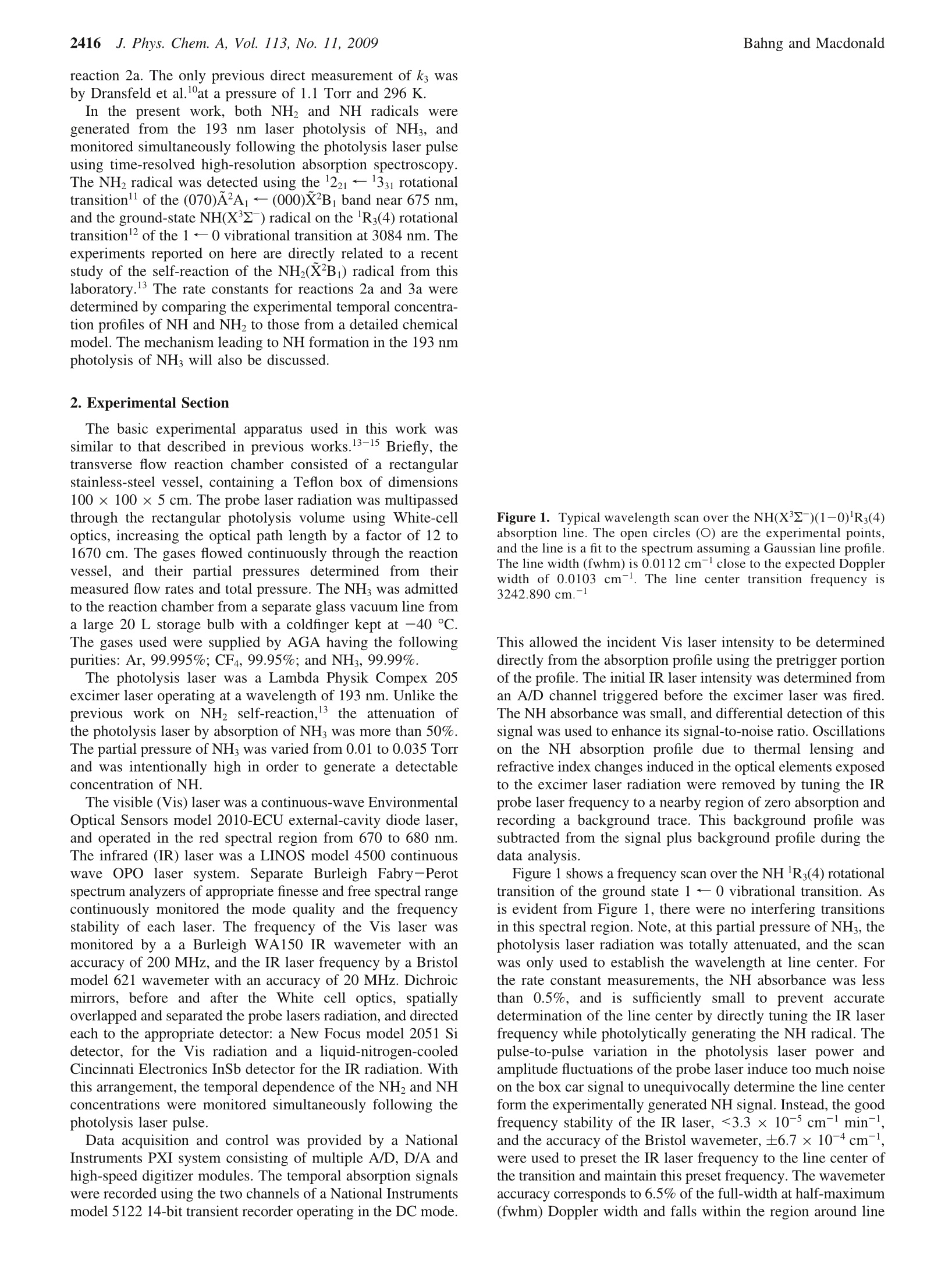
还剩7页未读,是否继续阅读?
继续免费阅读全文产品配置单
瞬渺科技(香港)有限公司为您提供《光学参量振荡器OPO OS4500激光器相关论文》,该方案主要用于空气中有机污染物 检测,参考标准《暂无》,《光学参量振荡器OPO OS4500激光器相关论文》用到的仪器有红外连续可调OPO激光器 德国 Qioptiq。
我要纠错


